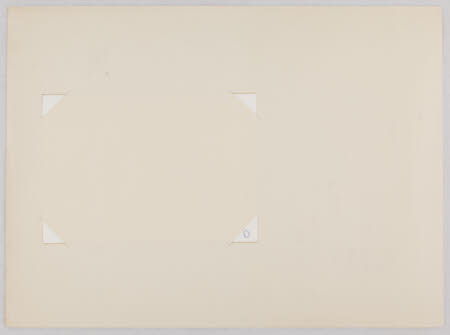Page
Mercie Keer Lack, ARPS (1894 - 1985)
Category
Photographs
Date
1939
Materials
Paper
Measurements
28 x 23 x 3 cm
Place of origin
England
Order this imageCollection
Sutton Hoo, Suffolk
NT 1940312.2.3
Caption
In 1939 a thrilling archaeological discovery was made in Suffolk that helped to change our understanding of Anglo-Saxon life and burial practices. The site known as Sutton Hoo, near Woodbridge, contains the multiple burial mounds of an East Anglian royal dynasty, dating from the 7th century AD. A team of archaeologists uncovered the fossil of the ship (caused by the high acidity of the soil) and an astonishing collection of treasures. The finds revealed the wealth, impressive craftsmanship and the wide- ranging connections and trading relationships of the Anglo-Saxon people. Shortly after the discovery, schoolteachers and amateur photographers Mercie Lack (1894–1985) and Barbara Wagstaff (1895–1973) were given permission to record the fossil of the ship, by which time all the treasure had been removed to the British Museum. Lack described it as a ‘kind of ghost ship’, and the images she and Wagstaff took provide valuable information about this excavation. The image shown here – from a meticulously annotated photo album – was taken with rare colour slide film and captures some of the archaeologists who undertook the excavation.
Summary
A photograph album page containing a very early colour print showing a complete view from the stern of the ship during the 1939 excavation, heavily annotated.
Full description
"The impression of the ship, alas, was of a fleeting nature, a kind of ghost-ship, revealed for a short time during which it was possible to make records, photographs and sketches and then the original was gone for ever," Mercie Lack. During the summer of 1939 a discovery was made that changed history as a rich undisturbed Anglo-Saxon ship burial was revealed. Whilst lying beneath a burial mound for some 1300 years, the acidity of the sandy soil had rotted away the ship's timbers leaving behind a fossil peppered with rusty iron rivets. After hearing this exciting news whilst staying with her aunt, Mercie Lack obtained permission from lead archaeologist Charles Phillips to return and photograph the excavation with her friend Barbara Wagstaff. Schoolmistresses and serious amateur photographers, they were present on site between the 8th and 25th August and together took approximately 60% of the total number of recorded contemporary negatives. In addition to black and white photographs, Lack and Wagstaff also each managed to obtain a roll of 35mm Agfa colour slide film which went on sale in Britain briefly before the outbreak of the war. Thought to possibly be the earliest colour photographs of an archaeological excavation, these colour images bring another dimension to the story. After the war, both Mercie Lack and Barbara Wagstaff became Associates of the Royal Photographic Society and Sutton Hoo remained a keen interest of theirs to the last.
Provenance
A collection of photographs taken by Mercie Lack ARPS in 1939 at the ship burial excavation at Sutton Hoo. Given to the National Trust in 2011 by Andrew Lack the great-nephew of Mercie Lack, the photographer.
Makers and roles
Mercie Keer Lack, ARPS (1894 - 1985), photographer

